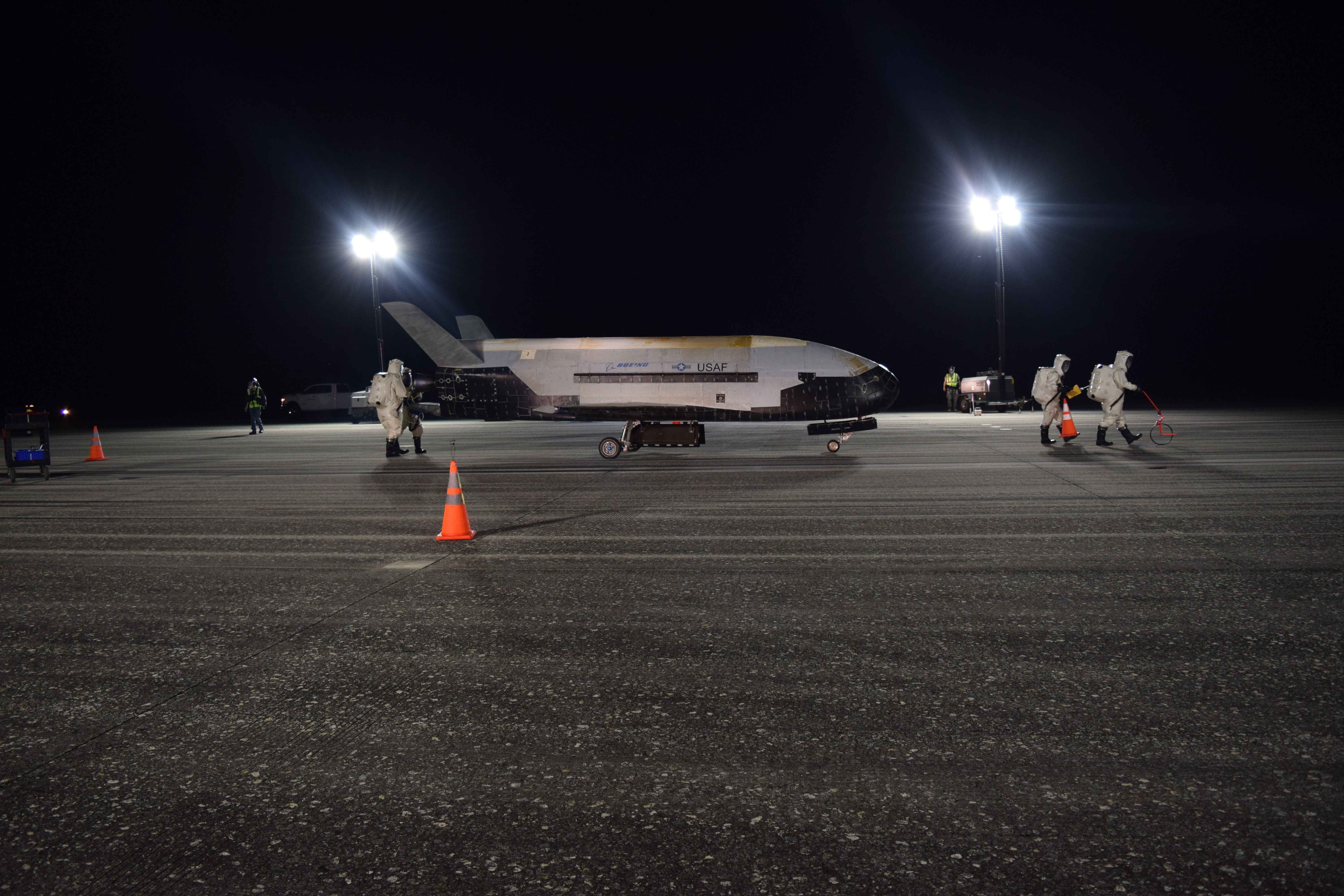The U.S. Air Force’s unmanned X-37B Orbital Test Vehicle successfully completed its fifth mission on Sunday, landing at NASA’s Kennedy Space Center Shuttle Landing Facility after 780 days in orbit. The X-37B was launched on Sept. 7, 2017, from Cape Canaveral Air Force Station, Florida, onboard a Space X Falcon 9 booster. The longest the vehicle, which was originally built for a 270-day duration, had previously spent in orbit was 718 days.
“This program continues to push the envelope as the world’s only reusable space vehicle,” said Air Force Rapid Capabilities Office director Randy Walden. “With a successful landing [on Sunday], the X-37B completed its longest flight to date and successfully completed all mission objectives. This mission successfully hosted Air Force Research Laboratory experiments, among others, as well as providing a ride for small satellites.”
Since its first launch in April 2010, the X-37B test program has logged a total of 2,865 days in orbit. According to the Air Force, the program is designed to perform “risk reduction, experimentation and concept of operations development for reusable space vehicle technologies.” A sixth mission for the X-37B is planned for 2020.




































Thank you, AvWeb, for NOT reporting this as a “secret flight” like all the other news outlets did.
It’s not a secret if the Air Force holds a press briefing and lists it’s accomplishments. Duh!
But it is (was) meant to be a secret that it was up there so long because it can see and receive/transmit what other satellites cannot…
And most of the time it was over Syria and Turkey.
All in the name of Air Force research, of course.